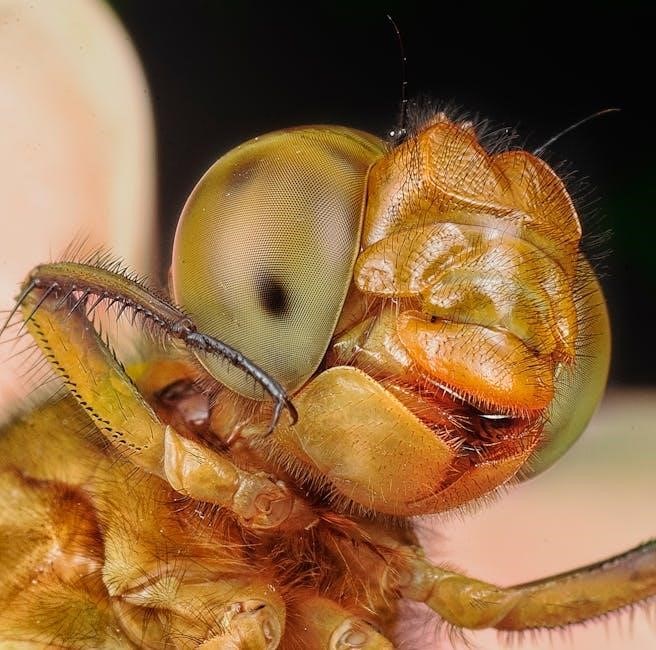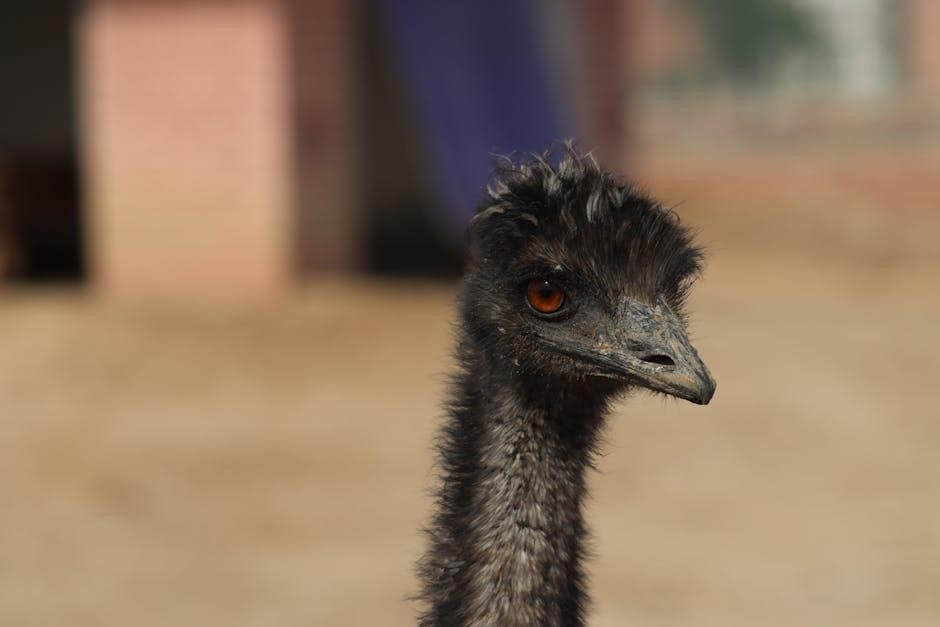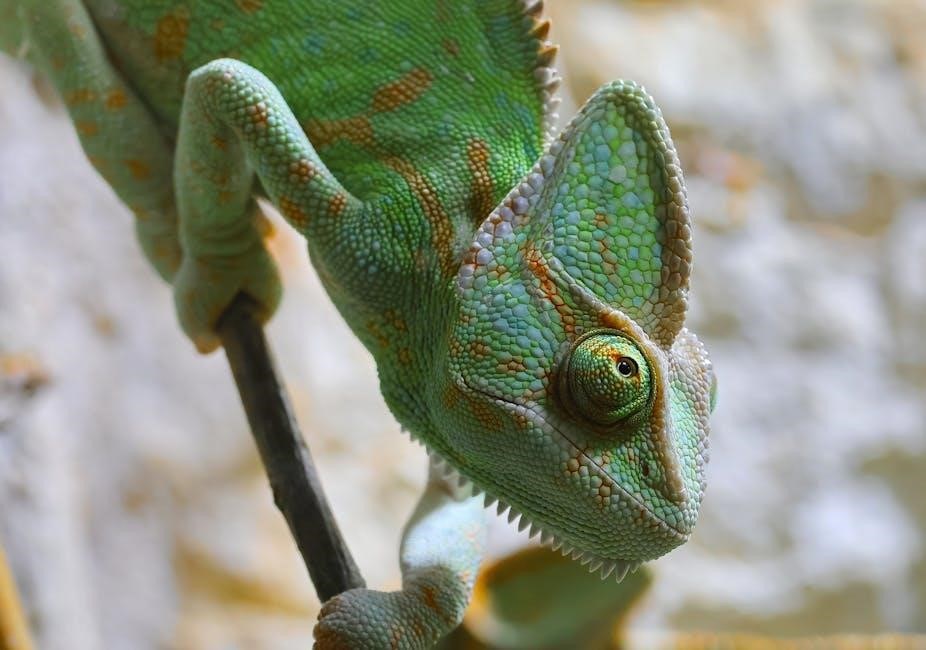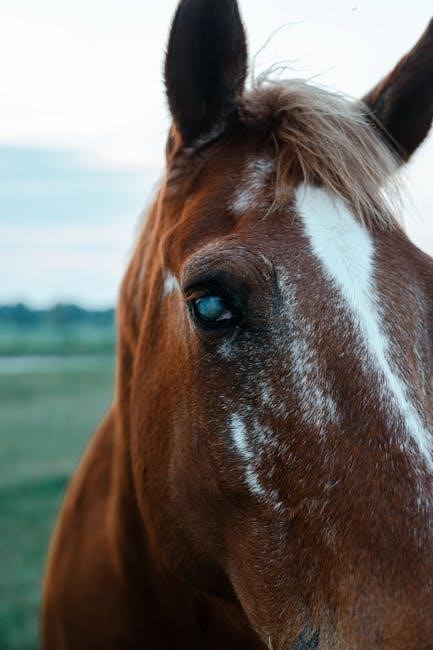Toni Morrison, a Nobel Prize-winning author, explores race, identity, and history in her works. Her debut novel, The Bluest Eye (1970), set in 1940s Lorain, Ohio, examines the tragic story of Pecola Breedlove, a young Black girl grappling with beauty standards, poverty, and familial dysfunction, reflecting Morrison’s haunting prose and deep social insight.
1.1 Brief Overview of Toni Morrison’s Literary Career
Toni Morrison was a Nobel Prize-winning novelist, essayist, and professor, renowned for her profound exploration of race, identity, and history. Born in Lorain, Ohio, in 1931, Morrison began her academic career teaching literature before publishing her debut novel, The Bluest Eye, in 1970. This work launched her as a major literary voice, addressing themes of racism, beauty standards, and familial trauma. Over her career, Morrison authored 11 novels, including Beloved, Sula, and Song of Solomon, earning critical acclaim for her lyrical prose and unflinching examination of the African American experience. Her work was recognized with the Pulitzer Prize, the Nobel Prize in Literature, and the Presidential Medal of Freedom before her passing in 2019.
1.2 The Significance of The Bluest Eye as Morrison’s Debut Novel
1.2 The Significance of The Bluest Eye as Morrison’s Debut Novel
The Bluest Eye marked Toni Morrison’s entrance into the literary world, introducing her unique voice and thematic depth. Published in 1970, the novel immediately garnered attention for its unflinching portrayal of racism, poverty, and internalized self-hatred within an African American family. Centered around Pecola Breedlove’s tragic quest for blue eyes, the story challenged societal beauty standards and explored the psychological toll of racial oppression. Morrison’s debut not only established her as a powerful storyteller but also laid the groundwork for her future works, which continued to examine the complexities of identity and history. The novel remains a seminal work in American literature, sparking essential conversations about race, class, and gender.

Historical and Cultural Context
Set during the Great Depression in Lorain, Ohio, the novel reflects the era’s racial tensions and economic struggles that shaped African American life and influenced the characters’ internalized racism and societal pressures.
2.1 Setting: Lorain, Ohio, During the Great Depression
Lorain, Ohio, during the Great Depression, serves as the backdrop for The Bluest Eye. Morrison’s hometown provides a vivid setting where economic hardship and racial segregation are pervasive. The Breedlove family’s struggles mirror the broader societal issues of poverty and inequality. The setting underscores the characters’ internalized racism and their aspirations for beauty and acceptance in a world dominated by white standards. Morrison’s portrayal of Lorain highlights the oppressive environment that shapes the characters’ lives, emphasizing the interplay between economic despair and racial identity during this tumultuous period.
2.2 The Impact of Racism and Poverty on the Characters
Racism and poverty deeply affect the characters in The Bluest Eye, perpetuating cycles of self-hatred and despair. The Breedlove family, living in a society that devalues Blackness, internalizes these oppressive messages. Pecola’s desire for blue eyes symbolizes her longing for acceptance in a world that equates beauty with whiteness; Cholly and Pauline’s troubled relationship reflects the emotional toll of economic hardship and racial marginalization. The characters’ struggles highlight how systemic racism and poverty erode self-worth, trapping them in a cycle of pain and dysfunction; Morrison’s portrayal vividly illustrates the destructive power of these forces on individuals and families.

Plot Summary
The Bluest Eye tells the tragic story of Pecola Breedlove, a young Black girl in 1940s Lorain, Ohio, praying for blue eyes to escape societal rejection and internalized racism.

3.1 The Tragic Story of Pecola Breedlove
Pecola Breedlove, an 11-year-old African American girl, endures a life of poverty and abuse in 1940s Lorain, Ohio. Her desire for blue eyes stems from internalized racism, as societal beauty standards equate whiteness with beauty. Pecola’s parents, Pauline and Cholly, struggle with their own traumas, leaving her emotionally neglected. Her tragic journey culminates in a devastating encounter with her father, leading to her descent into madness. Morrison masterfully portrays Pecola’s heartbreaking story, highlighting the destructive impact of racial self-loathing and the failure of societal structures to protect vulnerable children. This narrative serves as a poignant critique of America’s racial and class inequalities.
3.2 The Struggle for Beauty and Acceptance
Pecola Breedlove’s longing for blue eyes symbolizes her internalized racism and the societal beauty standards that equate whiteness with beauty. Growing up in a world that devalues Blackness, Pecola believes that blue eyes will bring her acceptance and love. This struggle reflects the broader African American experience of conforming to white beauty norms. Morrison critiques how these standards distort self-perception, leading to self-hatred and low self-esteem. Pecola’s desire for blue eyes is a heartbreaking manifestation of her attempt to escape the racial and social marginalization she faces. Through Pecola’s story, Morrison examines the devastating impact of societal beauty ideals on Black identity and self-worth, offering a powerful commentary on race, beauty, and acceptance.
3.3 The Role of Family Dynamics in the Novel
The Bluest Eye portrays the dysfunctional Breedlove family, highlighting how their internal conflicts exacerbate Pecola’s suffering. Cholly, the father, struggles with his own demons, failing to provide emotional support. Pauline, the mother, is emotionally distant, prioritizing her job over her children. This lack of parental guidance leaves Pecola vulnerable. The Breedloves’ unstable home environment mirrors the societal neglect faced by African Americans. In contrast, the MacTeer family offers a nurturing space, showcasing the importance of a supportive household. Morrison illustrates how family dynamics can either perpetuate or mitigate the effects of external oppression, emphasizing the need for love and care in overcoming racial and economic hardships. This contrast underscores the novel’s exploration of family as both a source of strength and a site of pain.

Major Themes
Internalized racism, beauty standards, and the intersection of race, class, and gender are central themes, exploring how societal constructs destroy individual and communal identity, highlighting profound human tragedies.
4.1 The Destructive Nature of Internalized Racism
Toni Morrison’s The Bluest Eye masterfully explores the devastating effects of internalized racism, particularly through Pecola Breedlove’s desire for blue eyes. This longing symbolizes her internalization of white beauty standards, perpetuated by societal racism. The novel illustrates how such internalized beliefs lead to self-hatred and self-degradation, as characters like Pecola and her family struggle with their identity. Morrison shows how this mindset perpetuates violence and dysfunction, as seen in the Breedlove family’s fractured relationships and Pecola’s eventual descent into madness. The community’s complicity in valuing whiteness further exacerbates the cycle of oppression, highlighting the profound psychological and emotional damage caused by internalized racism. Morrison’s portrayal underscores the enduring impact of racial stereotypes and societal beauty norms on Black individuals and communities.
4.2 The Obsession with Beauty and Conformity
In The Bluest Eye, Morrison critiques the societal obsession with beauty and conformity, particularly the idealization of white features. Pecola Breedlove’s desire for blue eyes embodies this obsession, reflecting the internalized racism that equates whiteness with beauty and worth. The novel highlights how this obsession destroys individuality and self-esteem, especially among Black women and girls. Characters like Pauline Breedlove and Geraldine exemplify the societal pressure to conform to Eurocentric beauty standards, leading to self-hatred and the devaluation of Blackness. Morrison’s exploration reveals the broader cultural implications of these beauty norms, emphasizing their role in perpetuating racial and gender-based oppression. Through Pecola’s tragic story, Morrison underscores the destructive power of societal beauty ideals on personal and communal identity.
4.3 The Intersections of Race, Class, and Gender
The Bluest Eye masterfully explores the intersections of race, class, and gender, revealing how these factors intertwine to marginalize Black women and girls. Pecola Breedlove’s experiences as a poor, Black, female child in a society dominated by white beauty standards illustrate the compounded oppression she faces. Morrison highlights how systemic racism denies economic opportunities, perpetuating poverty among Black families like the Breedloves. Gender further complicates this, as Black women are subjected to both racial and patriarchal violence. The novel underscores how these intersecting oppressions erode self-worth, leading to internalized racism and self-hatred. Through Pecola’s tragic story, Morrison critiques the societal structures that devalue Blackness, femininity, and poverty, exposing the devastating consequences of these intersections on individual lives.

Character Analysis
The novel delves into the lives of characters shaped by racism, poverty, and societal expectations. Pecola Breedlove’s tragic journey reflects the destructive impact of internalized oppression and beauty standards.
5.1 Pecola Breedlove: The Tragic Heroine
Pecola Breedlove is the heart-wrenching protagonist of The Bluest Eye. An 11-year-old Black girl, she embodies the devastating effects of internalized racism and societal beauty standards. Pecola’s desire for blue eyes symbolizes her longing for acceptance in a world that devalues her existence. Her tragic journey is marked by abuse, neglect, and a dysfunctional family environment. Morrison portrays Pecola’s struggle as a desperate plea for love and validation, which ultimately leads to her mental and emotional unraveling. Through Pecola, Morrison critiques the destructive nature of white beauty ideals and the profound impact they have on Black identity and self-esteem.
5.2 Cholly Breedlove: The Broken Father Figure
Cholly Breedlove, Pecola’s father, is a deeply troubled and complex character shaped by his traumatic past. Abandoned as an infant and scarred by racism, Cholly struggles with self-worth and anger. His inability to protect his family, coupled with his alcoholism, leads to violent outbursts and emotional absence. Despite his flaws, Cholly’s character evokes pity as his actions stem from a lifetime of oppression and internalized racism. His relationship with Pecola is fraught with neglect and tragedy, yet there are moments of tenderness, revealing a fragmented humanity. Morrison portrays Cholly as a product of societal failures, highlighting the cyclical nature of abuse and the devastating impact of unresolved trauma on families and individuals.
5.3 Pauline Breedlove: The Mother’s Struggle with Identity
Pauline Breedlove, Pecola’s mother, embodies the internalized racism and class struggles prevalent in Morrison’s narrative. Her obsession with white beauty standards and her job as a maid for a white family reflect her fractured identity. Pauline’s harsh treatment of her daughter stems from her own insecurities and the societal devaluation of Black beauty. Despite her flaws, Pauline’s character reveals the broader impact of systemic oppression on Black women, forcing them to seek validation through external ideals. Her struggle to reconcile her own worth with the world’s expectations highlights the destructive power of internalized racism and the challenges of motherhood in a racially charged society.
5.4 Claudia and Frieda MacTeer: The Voice of Innocence
Claudia and Frieda MacTeer, the young sisters who narrate parts of The Bluest Eye, represent innocence and resilience. Their perspective contrasts with the dysfunction of the Breedlove family, offering a lens through which Morrison examines societal ills; Claudia’s resistance to internalized racism, particularly her rejection of white dolls, symbolizes hope and defiance. Frieda’s pragmatic nature complements Claudia’s fiery spirit, creating a balanced narrative voice. Together, they provide a counterpoint to Pecola’s despair, highlighting the possibility of self-love and resistance against oppressive beauty standards. Their voices underscore Morrison’s exploration of identity, race, and childhood, making them crucial to the novel’s emotional and thematic depth.

Literary Style and Narrative Technique
Toni Morrison’s literary style in The Bluest Eye features a non-linear narrative and rich, evocative language, creating a haunting exploration of identity and trauma.
6.1 Morrison’s Use of Non-Linear Narrative
Toni Morrison employs a non-linear narrative in The Bluest Eye, weaving past and present to reveal the fragmented lives of the Breedlove family. This structure mirrors the disjointedness of their experiences, as memories of Pecola’s tragic fate intertwine with the present-day struggles of her parents, Cholly and Pauline. The narrative shifts seamlessly between multiple perspectives, including those of Claudia and Frieda MacTeer, offering a multifaceted view of Lorain, Ohio, during the 1940s. Morrison’s choice of non-linear storytelling underscores the cyclical nature of trauma and the enduring impact of historical and cultural forces on individual lives. This technique heightens the novel’s emotional depth and complexity;
6.2 The Power of Morrison’s Descriptive Language
Toni Morrison’s descriptive language in The Bluest Eye is vivid and evocative, painting a haunting portrait of Lorain, Ohio, and its characters. Her rich imagery captures the stark contrasts between beauty and ugliness, hope and despair. Morrison’s prose is both poetic and piercing, as seen in her depiction of Pecola’s fragile existence and the oppressive environments she navigates. The language not only conveys the emotional weight of the story but also amplifies the themes of race, class, and identity. Morrison’s masterful use of language immerses readers in the world of her characters, making their struggles and triumphs deeply relatable. Her words carry a profound emotional resonance, leaving a lasting impact on readers.

Critical Reception and Controversy
The Bluest Eye has faced intense controversy due to its graphic themes, including incest and racial violence, leading to frequent bans in schools and libraries nationwide.
7.1 The Bluest Eye as a Frequently Banned Book
The Bluest Eye is often banned in schools and libraries due to its explicit themes of incest, rape, and racial violence. Critics argue these depictions are inappropriate for young readers, while supporters emphasize their literary and social significance. The novel has repeatedly ranked among the most challenged books in the U.S., highlighting its controversial nature; Despite this, it remains a vital work for exploring systemic racism and societal beauty standards. Morrison’s unflinching portrayal of Pecola’s tragic story challenges readers to confront uncomfortable truths, sparking essential discussions about identity, culture, and justice. Its frequent bans underscore the enduring tension between censorship and the value of provocative literature in fostering understanding and change.
7.2 The Novel’s Enduring Relevance in Modern Literature
The Bluest Eye remains a cornerstone of contemporary literature, addressing issues that resonate deeply today. Its exploration of internalized racism, beauty standards, and systemic oppression continues to spark vital conversations. Morrison’s vivid prose and complex characters offer insights into the enduring struggles of marginalized communities. The novel’s themes of identity, trauma, and societal injustice are timeless, making it a crucial text for discussions on race, gender, and class. Its influence extends beyond academia, inspiring new generations of writers and activists. As a powerful reflection of human experience, The Bluest Eye ensures Morrison’s legacy as a leading voice in modern literary discourse, urging readers to confront and challenge societal norms.

Personal and Social Impact
Toni Morrison’s The Bluest Eye profoundly impacts readers by addressing race, beauty, and identity, inspiring personal reflection and social change through its haunting narrative and universal themes.
8.1 The Novel’s Influence on Discussions of Race and Beauty
The Bluest Eye has profoundly shaped discussions on race and beauty, challenging societal standards that equate whiteness with beauty. Morrison’s portrayal of Pecola Breedlove’s longing for blue eyes critiques internalized racism and the destructive impact of Eurocentric beauty ideals. The novel sparks conversations about self-acceptance and identity, resonating with readers across generations. Its exploration of how systemic racism and poverty distort self-perception has made it a crucial text in discussions of race, class, and gender. Morrison’s work continues to inspire reflections on beauty standards and their intersection with social inequality, reinforcing its relevance in contemporary debates about identity and representation.
8.2 Morrison’s Inspiration from Real-Life Experiences
Toni Morrison drew heavily from her personal experiences and observations while writing The Bluest Eye. Growing up in Lorain, Ohio, Morrison witnessed the effects of racism and poverty firsthand. A pivotal moment was a childhood conversation with a friend who longed for blue eyes, sparking her exploration of internalized racism. Morrison’s hometown environment and family dynamics also influenced the novel’s setting and characters. Her own anger and empathy toward such experiences fueled the narrative, blending fiction with autobiographical elements. This connection to real life adds depth and authenticity, making the novel a powerful reflection of societal issues and personal struggles.

Resources for Further Exploration
Download The Bluest Eye PDF or audiobook for deeper engagement. Explore summaries, analyses, and discussions online, including versions in multiple languages like Hindi and Tamil.
9.1 The Bluest Eye PDF and Audiobook Availability
The Bluest Eye is widely available in various formats. Readers can access the novel as a PDF for digital reading or opt for the audiobook, narrated by Toni Morrison herself, offering a unique listening experience. These formats ensure accessibility and convenience for modern readers, allowing them to engage with Morrison’s profound storytelling in their preferred medium.
9.2 Recommended Reading and Analysis
Supplement your reading of The Bluest Eye with critical analyses and essays that delve into its themes, characters, and historical context. Online resources offer detailed summaries, thematic explorations, and discussions of Morrison’s narrative techniques. Videos and articles provide insights into the novel’s cultural significance and its portrayal of race, class, and gender. For deeper understanding, explore scholarly articles and book reviews that highlight Morrison’s unique storytelling style. Additionally, educational platforms and study guides offer structured analyses, making it easier to grasp the novel’s complex layers and emotional depth. These resources enrich the reading experience and provide a comprehensive understanding of Morrison’s seminal work.
